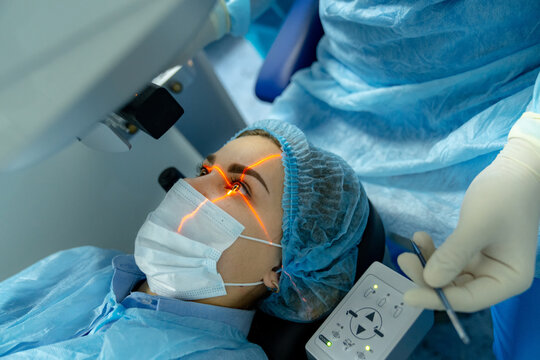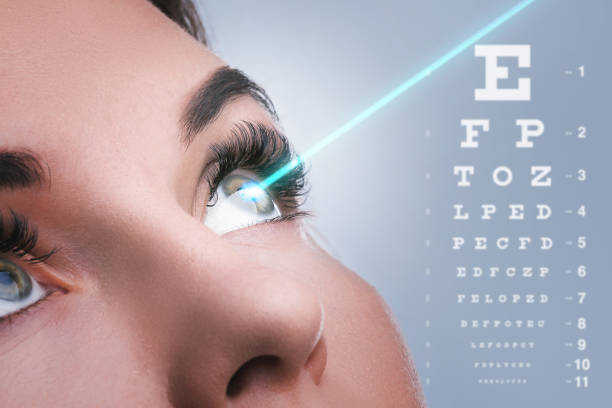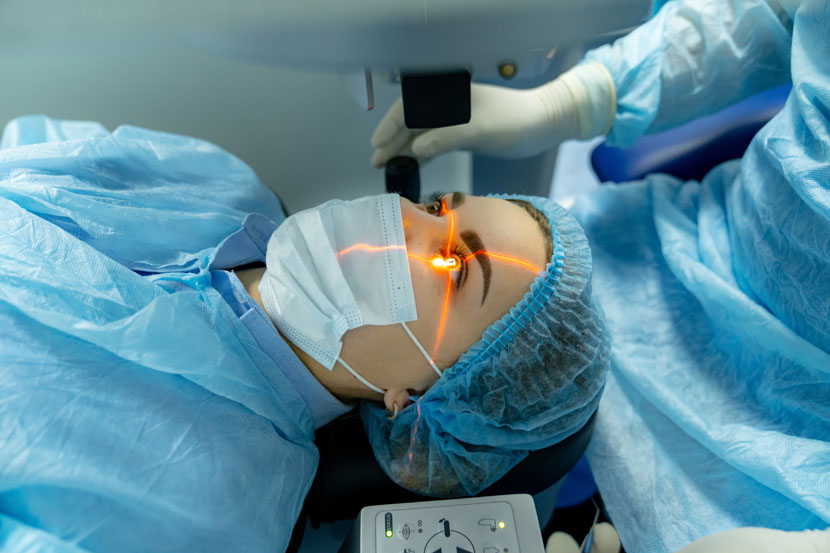Vision Correction & Eye Surgery in Korea
Clear Vision, Brighter Future.
Our Process
At our agency, we ensure that your vision correction journey is smooth, efficient, and stress-free. Korea is known for having some of the most advanced vision correction technology in the world, and most procedures take just one day. Before your appointment, we recommend that you avoid wearing contact lenses for at least a week. When you arrive, you’ll undergo a comprehensive eye exam that lasts between 40 to 60 minutes, during which multiple tests will be performed using state-of-the-art diagnostic equipment. Throughout this process, our team will be there to assist you, ensuring clear communication and understanding.
Once your examination is complete, the doctor and specialists will analyze your results and provide you with personalized options for vision correction. You have the flexibility to proceed with the procedure on the same day, schedule it for the next day, or choose a time that best suits your availability. When you’re ready, numbing eye drops will be applied, and you’ll be prepared for the procedure. The surgery itself is quick, typically lasting between 10 to 20 minutes, and once completed, you’ll experience an immediate improvement in your vision. Afterward, you’ll have time to rest in the recovery room, and the doctor will conduct a final check before you leave. We will also accompany you to the pharmacy to collect the necessary medications that will aid in healing and prevent infection.
Not all vision correction clinics operate at the same level of quality, and it’s important to choose the right one. Some clinics focus on low-cost, high-volume procedures, which can compromise both equipment quality and patient care. While the doctors may be skilled, the factory-like approach can lead to fatigue and potential errors. In contrast, top-tier clinics prioritize patient safety by limiting the number of daily procedures and investing in cutting-edge technology. Despite the higher pricing, the cost is still significantly lower than what you would pay in the U.S., Canada, or Australia for a single eye. When it comes to your eyesight, we always recommend choosing the best.

LASIK
LASIK (Laser-Assisted In-Situ Keratomileusis) is a widely used vision correction technique that combines two surgical steps. First, a femtosecond laser or a microkeratome blade creates a thin flap in the cornea. Next, an excimer laser reshapes the cornea to correct refractive errors such as nearsightedness, farsightedness, and astigmatism. The corneal flap is then repositioned, adhering naturally without sutures in just minutes. Post-surgery, you’ll receive special eye drops and medications to aid healing and reduce infection risks. While the procedure only requires a day, we recommend staying for at least three days to allow for a follow-up check-up. Recovery is fast, and most patients notice a significant improvement in vision within 24 hours.

LASEK
LASEK (Laser-Assisted Subepithelial Keratectomy) is an alternative to LASIK, particularly for individuals with thin corneas. The procedure is similar to PRK (Photorefractive Keratectomy) but involves replacing the surface layer of the cornea after reshaping it with an excimer laser. This technique allows for effective correction of refractive errors while preserving more corneal tissue. While LASEK offers strong benefits, it has a longer recovery period compared to LASIK. Patients may experience discomfort and are required to wear a protective “bandage contact lens” for up to four days. Additionally, topical steroid drops need to be used for several weeks. Despite the extended recovery time, LASEK is a great option for those who are not candidates for LASIK. Our experts will guide you in selecting the best procedure for your needs.
Disadvantages of LASEK
LASEK has a few disadvantages compared to LASIK. The recovery time is longer, sometimes taking up to two weeks for functional vision to return, whereas LASIK patients typically experience clear vision within a day. LASEK also tends to be more painful than LASIK, though less painful than PRK. After the procedure, patients must wear a “bandage contact lens” for up to four days to protect the treated eye, something not required after LASIK. Additionally, the use of topical steroid drops is necessary for a longer period compared to LASIK to aid in healing and reduce inflammation.

SMILE
SMILE (Small Incision Lenticule Extraction) is a modern, minimally invasive laser eye surgery that corrects nearsightedness without creating a corneal flap. Instead, a femtosecond laser is used to create a thin disc-shaped tissue (lenticule) inside the cornea, which is then removed through a small incision. This technique significantly reduces the risk of dry eye, corneal thinning, and ectasia, making it one of the safest and most stable vision correction procedures available. The incision in SMILE is 80% smaller than the flap created in LASIK, which means less disruption to the corneal surface and faster healing. Although SMILE is slightly more expensive than LASIK or LASEK, the long-term benefits make it an excellent choice for those seeking a highly reliable and advanced procedure.
Choosing the right vision correction procedure depends on multiple factors, including your eye condition, lifestyle, and long-term expectations. Our team will ensure that you receive expert guidance and personalized care to achieve the best possible results.


